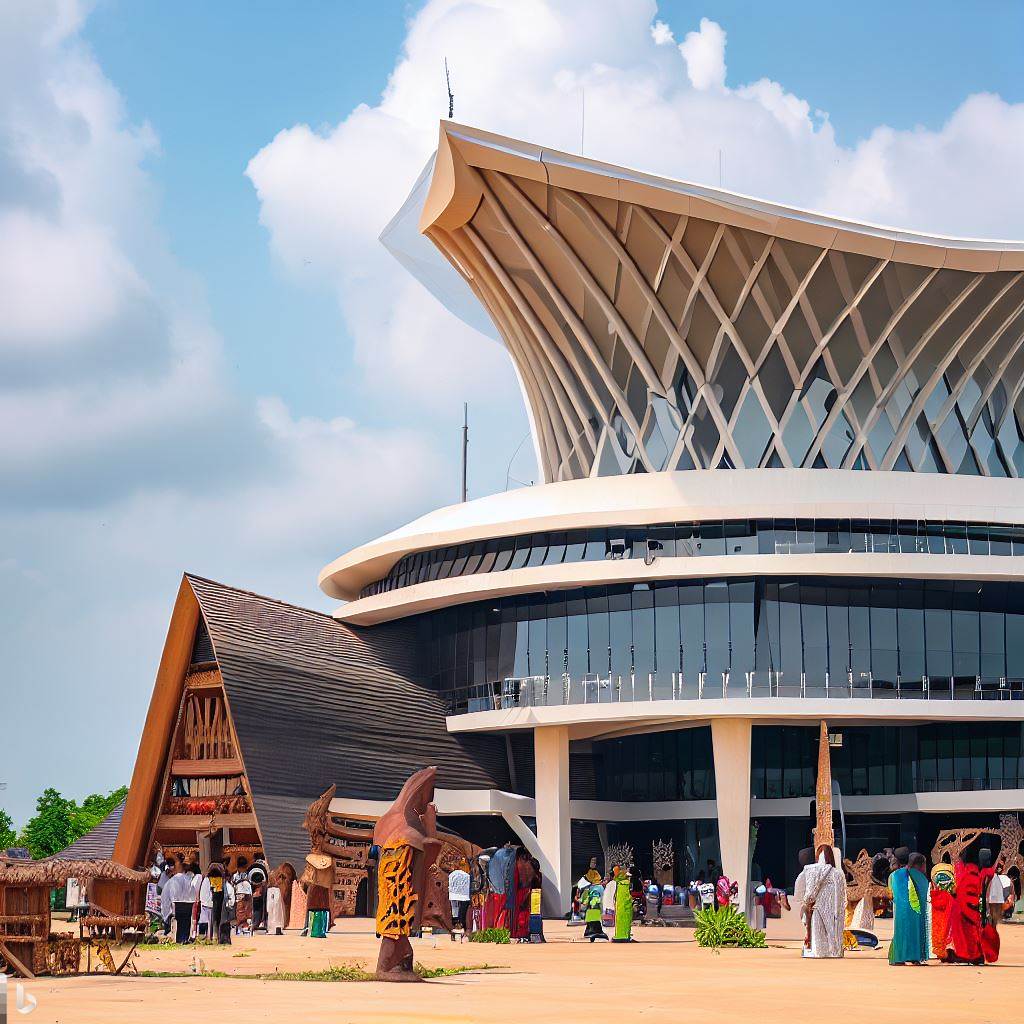Introduction
Nigerian architecture is a unique blend of various cultures and historical influences. The diversity of Nigeria’s culture can be seen through its numerous architectural styles.
The artistry and attention to detail in Nigerian architecture have made it stand out as a force to be reckoned with. Therefore, exploring the impact of Nigerian architecture on Africa’s skyline is crucial.
This blog post aims to do just that. We will delve into the history, cultural influences, and significance of Nigerian architecture. We will also examine how its influence has spread to the rest of Africa’s skyline.
By the end of this blog post, we hope to have a better understanding of the impact Nigerian architecture has had on Africa.
Read: Challenges Faced by Nigerian Architects: A Deep Dive
Traditional Nigerian Architecture:
Nigeria boasts diverse traditional architectural styles, unique to each region:
- Hausa architecture (North) uses mud and clay from the surrounding savannah region.
- Yoruba architecture (West) features adobe, palm fronds, and bamboo poles for homes.
- Edo architecture (Southwest) employs palm logs and clay.
- Igbo architecture (South) uses mud-brick and palm fronds, akin to Edo style.
These styles hold cultural significance based on resource availability and beliefs:
- Hausas use clay and mud due to accessibility and earth-based cosmology beliefs.
- Yorubas use bamboo poles for spirituality and cultural symbolism during festivals and ceremonies.
Traditional Nigerian architecture greatly influences contemporary African architecture:
- Architects fuse traditional elements with modern designs in buildings across the continent.
- Earth and clay make a resurgence in sustainable architecture, combined with modern construction for eco-friendly buildings.
- Traditional motifs and patterns in modern designs gain recognition, showcasing Nigerian architecture’s uniqueness.
Nigerian architecture reflects the country’s rich history and culture, influencing contemporary African architects.
Read: Exploring the Evolution of the Architecture Profession in Nigeria
Modern Nigerian Architecture:
Modern architecture in Nigeria emerged in the 20th century, initially influenced by colonial architecture. Over time, Nigerians adopted a contemporary approach, blending tradition and modernity in their designs.
Contemporary Nigerian architecture:
- Fuses traditional and modern elements.
- Strikes a balance between modernity and cultural heritage.
- Incorporates cultural symbolism for standout designs.
Notable Nigerian architects contributing to the African skyline:
- Kunlé Adeyemi, designed acclaimed Makoko Floating School.
- David Adjaye OBE, merges African and Western architectural elements.
- Olajumoke Adenowo, fuses contemporary and traditional elements in designs.
- Their influence extends beyond Nigeria’s borders.
The Makoko Floating School has been replicated in other African communities, redefining African architecture.
- Contemporary Nigerian architecture significantly impacts Africa’s skyline.
- It evolves from colonial to embody African cultural heritage.
- Architects blend tradition and modernity, inspiring the African skyline.
- As Nigeria’s economy grows, the architecture industry will continue to evolve and inspire.
Read: Working Conditions for Aviation Professionals in Nigeria
Gain More Insights: The Influence of Urban Planners on Nigeria’s Cityscape
Influence on African Skyline
African architecture has been evolving for centuries, and Nigeria has been at the forefront of this evolution.
Nigerian architecture has had a significant impact on the wider African skyline and has influenced the perception of African architecture on a global stage.
- The impact of Nigerian architecture on the wider African skyline cannot be overstated. Nigeria has always been a melting pot of diverse cultures and traditions, and this has influenced Nigerian architecture.
The blend of traditional and modern techniques has led to the creation of new and unique architectural designs that are now part of the African skyline. - One major effect of Nigerian architecture on the perception of African architecture on the global stage is that it has turned the spotlight on African architecture.
Nigerian architects are now being recognized for their unique designs, and this has brought a new level of respect to African architecture. - The blending of traditional and modern techniques has brought about a unique African identity in architecture.
Nigerian architects have been able to incorporate traditional building methods and materials into modern designs, resulting in buildings that have a distinct African authenticity. This has contributed to the development of an African architectural identity that is recognized around the world.
Nigerian architecture has also had an impact on the way African cities are built.
Architects have been at the forefront of green architecture, and this has led to the creation of eco-friendly buildings in different parts of Africa.
These buildings have reduced energy consumption and have helped to mitigate the effects of climate change in Africa.
The use of locally-sourced materials is another hallmark of Nigerian architecture. Nigerian architects use materials such as wood, clay, and mud, which are readily available in many parts of Africa.
This has led to the creation of sustainable buildings that are aesthetically pleasing and culturally relevant.
In essence, Nigerian architecture has had a profound impact on the wider African skyline and has influenced the perception of African architecture on the global stage.
The blending of traditional and modern techniques has brought about a unique African identity in architecture, and Nigerian architects continue to contribute to the development of sustainable and eco-friendly buildings in Africa.

Challenges and Opportunities in Nigerian Architecture
Identifying the Challenges
Creating sustainable and innovative architecture in Nigeria comes with its fair share of challenges.
Firstly, there is a lack of access to modern technologies and building materials that are required for sustainable design. This is due to the high cost of these materials which are often imported from other countries.
Nigerian architects face challenges with erratic power supply hindering green technology utilization.
The lack of government policies prioritizing sustainable design complicates project funding.
Finally, there is a shortage of skilled workers in Nigeria with experience in sustainable design and construction practices.
Exploring the Opportunities
Despite the challenges, there are several opportunities for Nigerian architects to lead the way in sustainable design solutions.
Architects have an opportunity to incorporate sustainable design practices in infrastructure development, promoting environmental friendliness and economic growth.
Nigerian architects can also leverage technology and innovative building materials to create sustainable projects that are affordable and accessible.
The country’s climate and location allow designers to integrate passive cooling and natural ventilation, reducing energy consumption and promoting sustainability.
Read: Dissecting The Architect Registration Council of Nigeria
Examples of Successful Sustainable Nigerian Architecture Projects
Despite the challenges, there are several Nigerian architecture projects that have successfully incorporated sustainable design practices.
One example is the Nka Foundation’s “Earth Architecture Competition,” which encourages architects to design sustainable structures using earth materials.
The “Lagos Photo Festival Pavilion” designed by NLE architects is another example of successful sustainable architecture in Nigeria. The design includes solar panels for energy generation, water catchment systems for rainwater harvesting, and natural ventilation.
The project used recycled materials, edible plants, solar panels, and rainwater harvesting systems for a garden terrace.
Nigerian architects face challenges but have opportunities for sustainable and innovative design solutions.
Leverage technology, innovative materials, passive cooling, and natural ventilation designs for environmentally friendly projects.
Projects like the “Earth Architecture Competition,” “Lagos Photo Festival Pavilion,” and “Green Fingers” serve as successful examples.
Read: Understanding Safety Standards in Nigeria’s Aviation
Find Out More: Professional Bodies for Urban and Regional Planners in Nigeria
Conclusion
Nigerian architecture has undoubtedly made a significant impact on the skyline of Africa.
Its influence can be seen in various buildings, from traditional tribal structures to modern skyscrapers.
The rich cultural heritage and diversity found in Nigerian architecture reflect the country’s history and the evolution of its people.
Recognize and appreciate Nigerian architecture for its global contributions, blending tradition with modernity.
Give architects more opportunities to showcase their talents and impact Africa’s skyline.
Celebrate and support Nigerian architects as they explore new opportunities and push architectural innovation.




